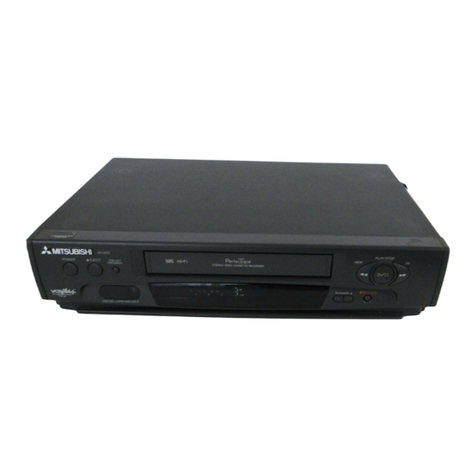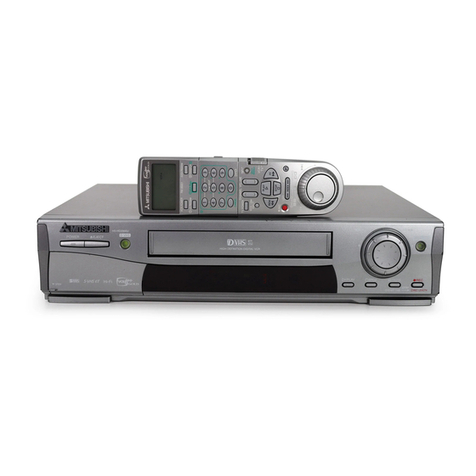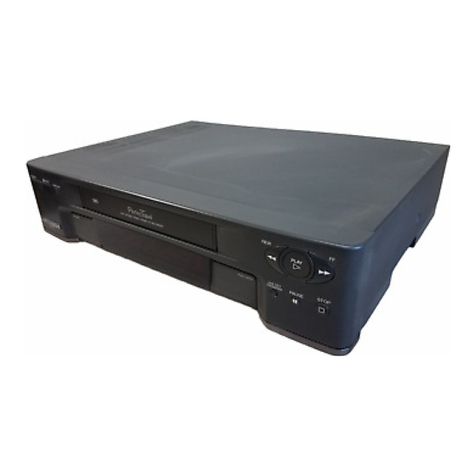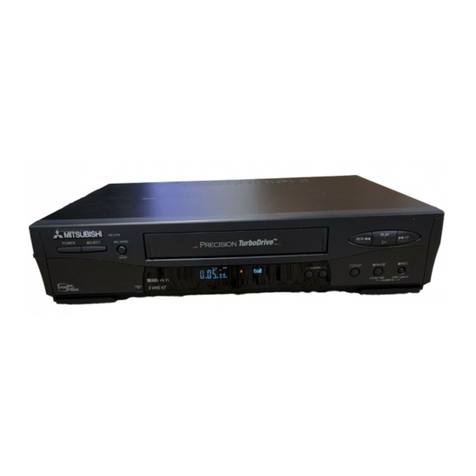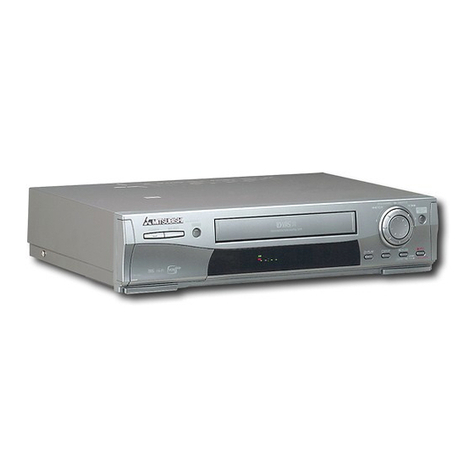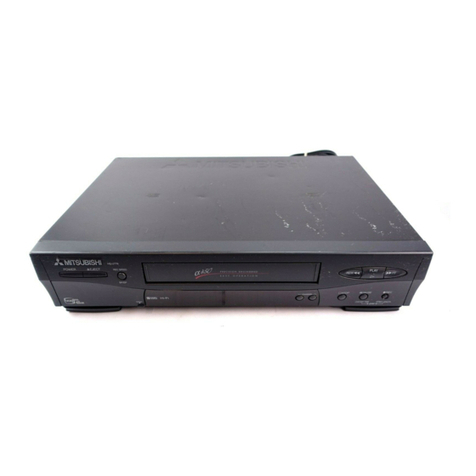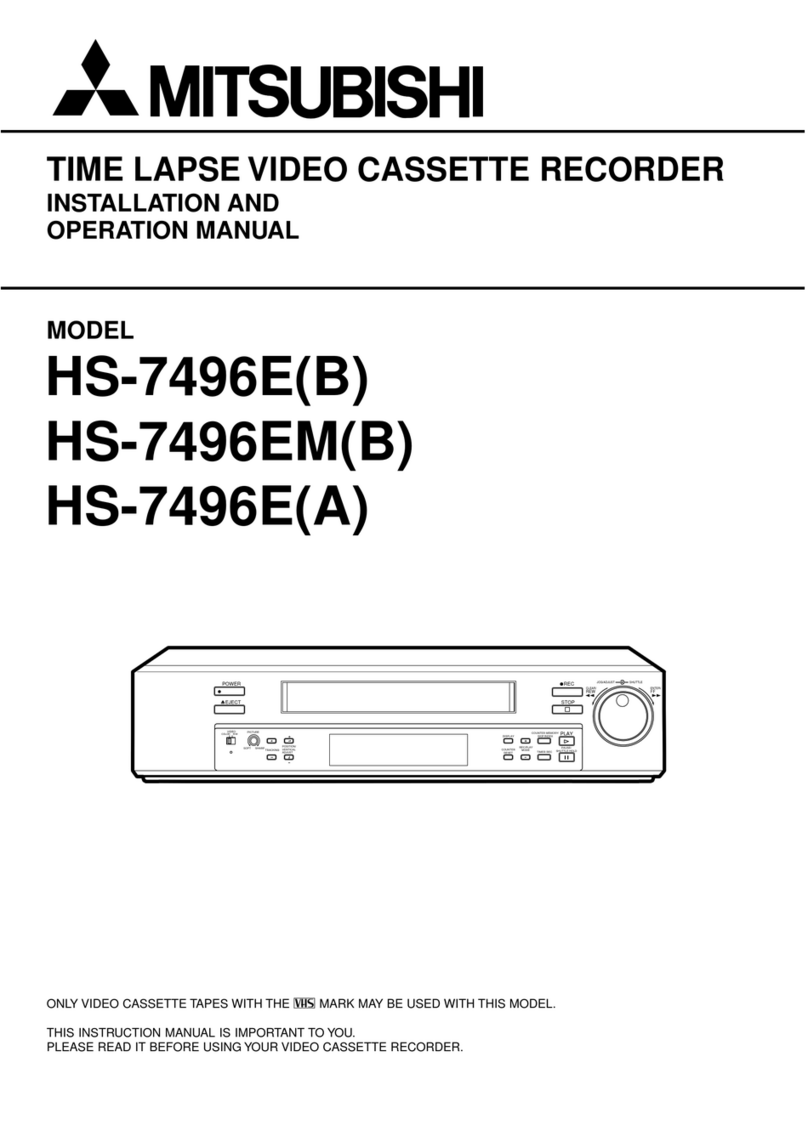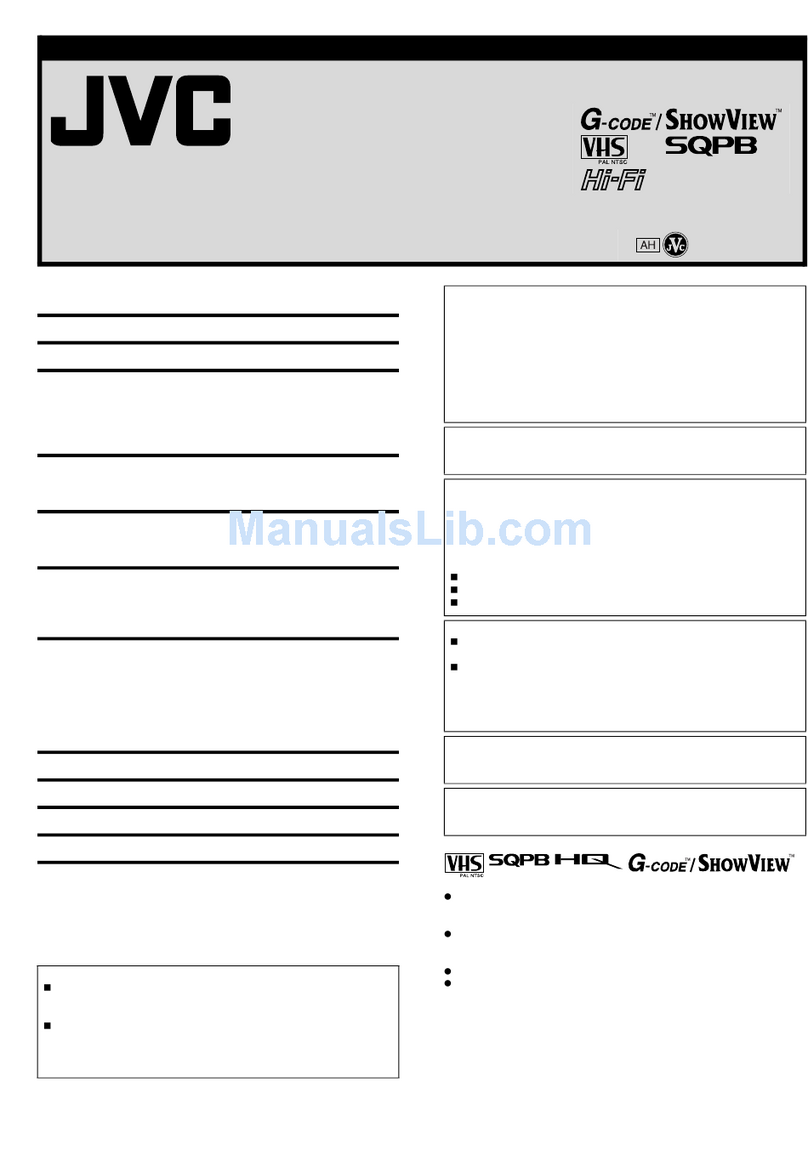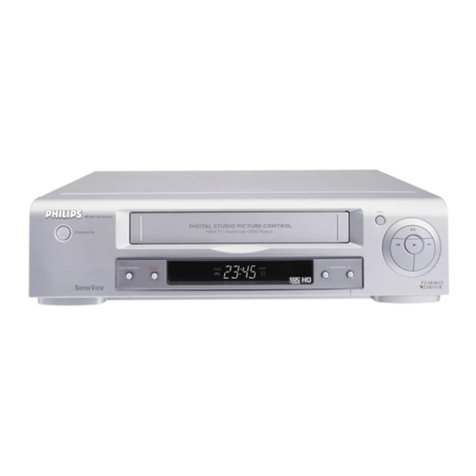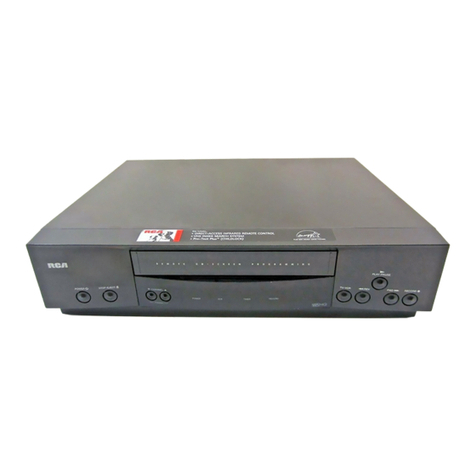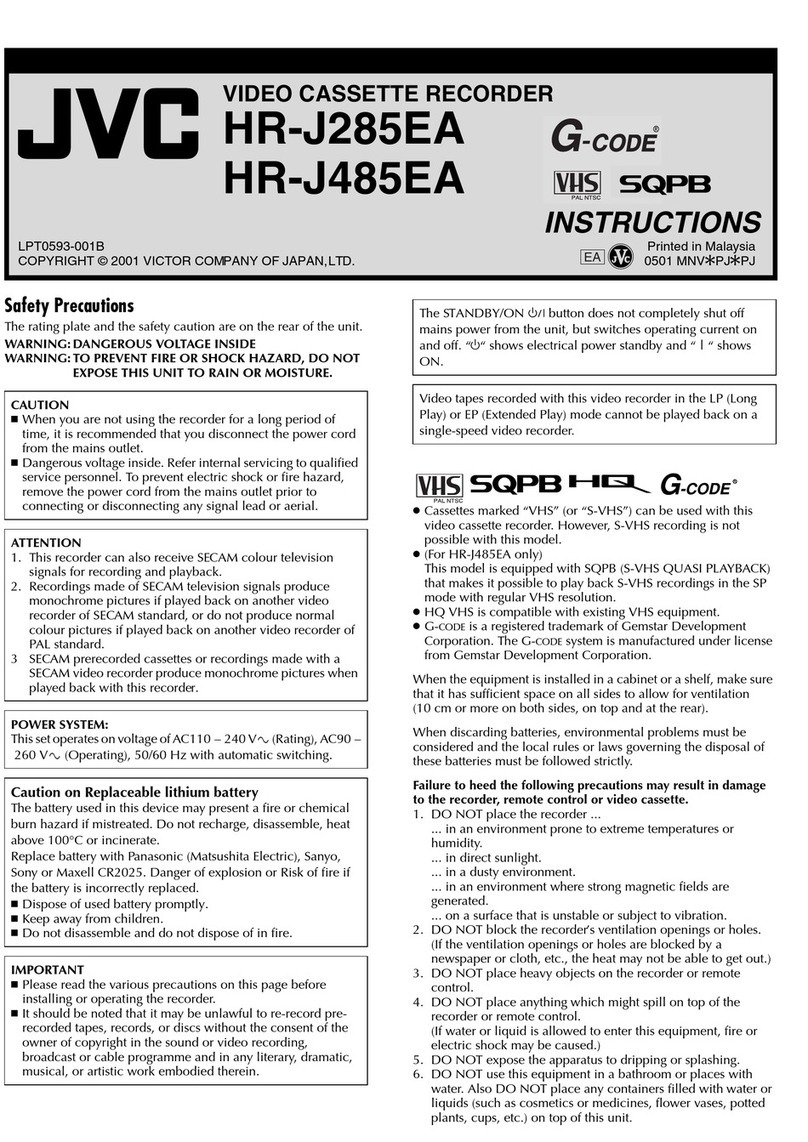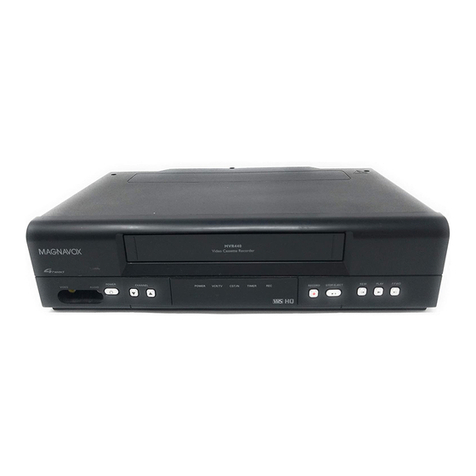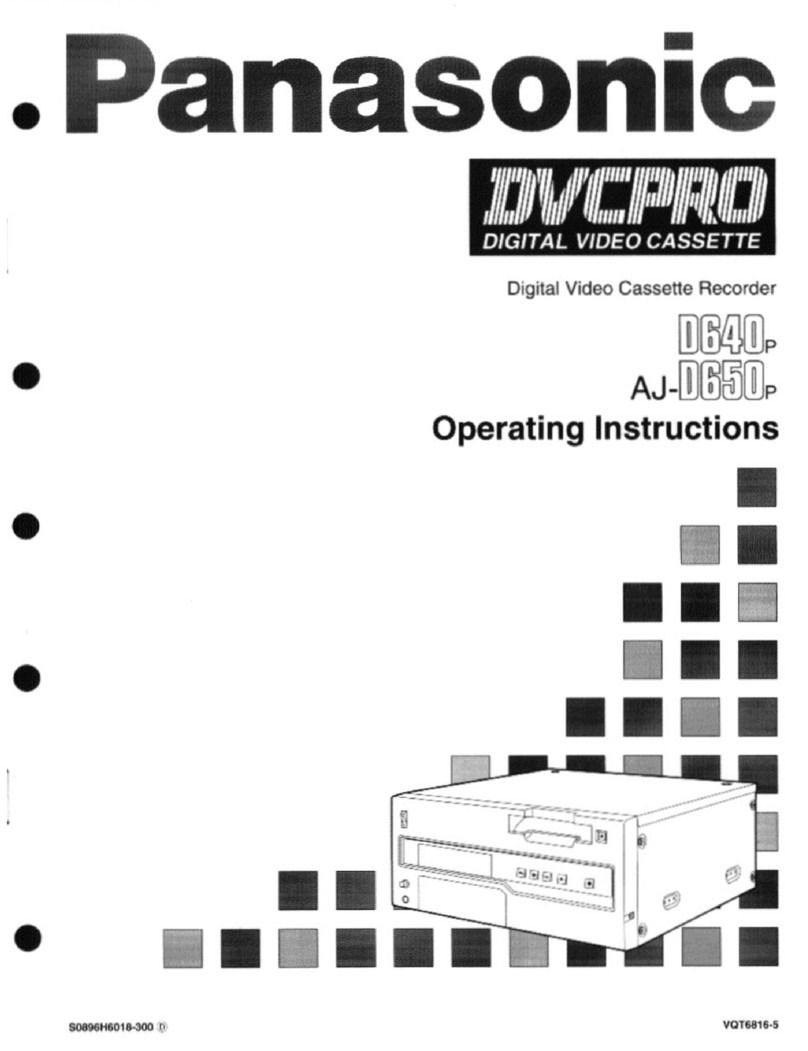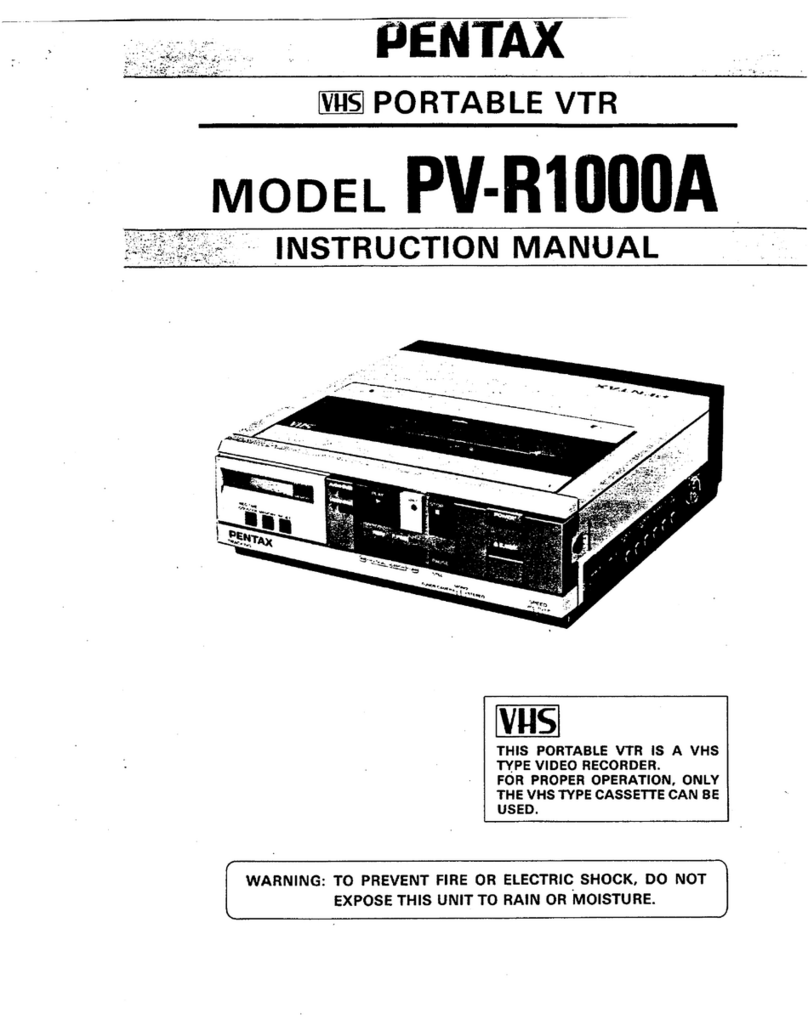12.Power-CordProtection
Power-supplycordsshouldberoutedso
thattheyarenotlikelytobewalkedonor
pinchedbyitemsplaceduponoragainst
them,payingparticularattentiontocords
atplugs,conveniencereceptacles,andthe
pointwheretheyexitfromtheappliance.
13.Lightning
Foraddedprotectionforthisvideoproduct
receiverduringalightningstorm,orwhen
it isleftunattendedandunusedforlong
periodsoftime,unplugit fromthewall
outletanddisconnecttheantennaorcable
system.Thiswillpreventdamagetothe
videoproductduetolightningandpower-
linesurges.
14.PowerLines
Anoutsideantennasystemshouldnotbe
locatedinthevicinityofoverheadpower
linesorotherelectriclightorpowercir-
cuits,orwhereit canfall intosuchpower
linesorcircuits.Wheninstallingan
outsideantennasystem,extremecare
shouldbetakentokeepfromtouchingsuch
powerlinesorcircuitsascontactwith them
mightbefatal.
15.Overloading
Donotoverloadwalloutletsandextension
cordsasthiscanresultin ariskoffire or
electricshock.
16.Object and Liquid Entry
Never push objects of any kind into this
video product through openings as they
may touch dangerous voltage points or
short-out parts that could result in a fire or
electric shock. Never spill liquid of any
kind on the video product.
• 17.OutAoor Antenna Grounding
If an outside antenna or cable system is
connected to the video product, be sure the
antenna or cable system is grounded so as
to provide some protection against voltage
surges and built-up static charges.
Section 810 of the National Electrical Code,
ANSI/NFPA No.70, provides information
with regard to proper grounding of the
mast and supporting structure, grounding
of the lead-in wire to an antenna discharge
unit, size of grounding conductors, location
of antenna discharge unit, connection to
grounding electrodes, and requirements for
the grounding electrode.
EXAMPLEOFANTENNAGROUNDING
/_-----_ANTENNA
/2_-._t_1,_ /ANTENNA
__/ _-? y DISCHARGE UNIT
IEOUIPMENT__ I_ ,/ _JGROUNDING
_"_C]_:,_ _ CONDUCTORS
_I-_" _(NEC SECTION 810-21)
o _J__GROUNr) CLAMPS
_'_ POWER SER VICE G ROUNDING
ELECTRODE SYSTEM
NEC -- NATIONAL ELECTRICAL CODE (NEC ART 250, PART H)
18.Servicing
Do not attempt to service this video prod-
uct yourself as opening or removing covers
may expose you to dangerous voltage or
other hazards. Refer all servicing to
qualified service personnel.
19.Damage Requh6ng Service
Unplug this video product from the wall
outlet and refer servicing to qualified
service personnel _mder the following
conditions:
(a) When the power-supply cord or plug is
damaged.
(b) If liquid has been spilled, or objects
have fallen intc the video product.
(c) If the video pro _uct has been exposed to
rain or water.
(d) If the video pro fluct does not operate
normally by ibl:owing the oporating
instructions.
Adjust only those controls that are
covered by the operating instructions as
an improper adjustment of other con-
trols may resull: in damage _md will
often require e_tensive work by a
qualified tec]_Jcian to restore the video
product to its normal operation.
(e) If the video product has been dropped or
the cabinet has been damaged.
(f) When the video product exhibits a
distinct change in performance -- this
indicates a need for service.
20.Replaceme.nt Part.,:
When replacement parts are required, be
sure the service tech.nidanhas used
replacement parts specified by the manu-
facturer or have the same characteristics
as the original p_tr:. Unauthorized substi-
tutions may result in fire, electric shock or
other hazards.
3


























